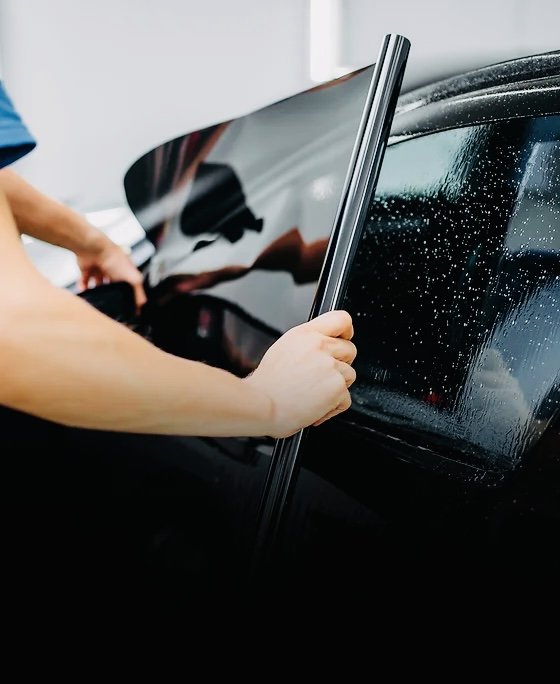Your Comprehensive Guide to Do It Yourself Window Tinting: Tips and Tricks
Undertaking a Do it yourself window tinting project provides an opportunity to enhance both the capability and appearances of your space. Prior to getting started on this endeavor, it is vital to navigate the complexities of neighborhood tinting regulations and pick an ideal film that straightens with your purposes.
Comprehending Window Tinting Regulations
Browsing the elaborate landscape of home window tinting laws is vital for any kind of DIY enthusiast seeking to improve their lorry's aesthetic appeals and convenience. Each state in the U.S. has certain policies pertaining to the allowed levels of tint on numerous windows, which can significantly influence your decision-making process.
Typically, these laws dictate the maximum allowable Visible Light Transmission (VLT) percent, which refers to the amount of light that can travel through the colored home windows. Some states permit only a certain percentage of tint on the front windshield, while permitting darker shades on rear windows. Compliance with these policies is critical, as failing to stick can result in fines or the requirement to eliminate the tint altogether.
Furthermore, there are typically differences in between passenger vehicles and industrial cars, with different regulations using to each classification. It's suggested to consult your local Division of Electric motor Vehicles or equal authority to gather precise info tailored to your location. Comprehending these legislations not only ensures legal compliance but additionally improves safety and security by preserving presence and preventing possible risks while driving.

Picking the Right Color Movie
Picking the suitable color film is an important action in the DIY window tinting process, as it straight affects both the appearance and capability of your lorry's home windows. Numerous factors should assist your selection, consisting of the type of movie, its lawful compliance, and your wanted end results.
First, think about the different types of tint films readily available: colored, metalized, ceramic, and crossbreed. Metalized movies offer improved warm denial and durability however can interfere with digital signals.
Following, ensure that the movie complies with local laws worrying visible light transmission (VLT) portions. Conformity with these legislations is essential to avoid fines and make certain security.
Crucial Tools for Do It Yourself Tinting
Having actually selected the appropriate color film for your windows, the following step involves gathering the essential tools to ensure a successful installment. The primary tools you will certainly best site need consist of an energy knife or a razor blade, which is vital for reducing the color film to the wanted dimension. A squeegee is additionally vital, as it helps remove air bubbles and smooth out the film during application.
In enhancement to these main tools, a spray container i was reading this loaded with soapy water will help in creating a practical surface area for the color film, permitting for adjustments before it adheres completely. A measuring tape makes sure accurate measurements for reducing the movie properly, while a soft fabric or lint-free towel is very important for cleaning up the glass surface area prior to application.
Moreover, consider making use of a warmth weapon or hairdryer, as this can help mold and mildew the color film to the shapes of the window and help with adherence. Ultimately, handwear covers are suggested to avoid finger prints on the movie throughout installment. By gathering these crucial devices, you will be well-prepared to tackle your DIY home window tinting project effectively.
Step-by-Step Application Refine
Begin by completely cleaning the window surface to ensure optimal adhesion of the tint film. Utilize a glass cleaner and a lint-free cloth to get rid of any kind of dirt, dust, or oil. As soon as the home window is clean, determine the tint film versus the home window, enabling for a mild overlap on all sides. Cut the film appropriately with a sharp utility blade for an accurate fit.
Lightly spray the home window surface area and the glue side of the film. Carefully line up the film with the top of the window, guaranteeing it is straight. Window Tinting Folsom. Use a squeegee to smooth the film, using firm, even pressure.
Allow the color to heal for at least 24 hours without rolling down the windows. Comply with these steps faithfully for optimum results in your DIY home window tinting task.
Maintenance and Care Tips
Proper upkeep and treatment of your window tint is vital to ensure its longevity and effectiveness. To start with, stay clear of making use of unpleasant cleansers or harsh materials when cleansing tinted home windows. Instead, select a mild, ammonia-free cleaner and a soft microfiber cloth to avoid scratches and peeling.
It's recommended to wait a minimum of a week after setup prior to cleansing your windows to enable the sticky to fully treat. Throughout this initial period, prevent rolling down the home windows to avoid any type of damage to the tint.
Regular maintenance includes evaluating the edges look at more info of the tint for any kind of signs of gurgling or raising (Window Tinting Folsom). If you see any issues, it's ideal to address them promptly to stay clear of further deterioration. In addition, be cautious with the usage of window treatments, such as tones or curtains, as they can generate heat that may compromise the color gradually

Final Thought
In verdict, carrying out a DIY window tinting job demands cautious factor to consider of neighborhood laws, selection of ideal tint movies, and the utilization of necessary devices. A methodical application procedure ensures optimum outcomes, while routine maintenance adds to the longevity of the color. By adhering to these guidelines, people can attain both visual enhancement and raised privacy in their areas, making DIY window tinting an important endeavor.